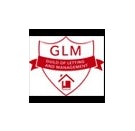Fair wear and tear is the most misunderstood area of the whole renting process, according to the Association of Independent Inventory Clerks. Some landlords still have unrealistic expectations centred on the deductions that can and cannot be made from the tenant deposit.
It is a commonly held view in the lettings industry that the House of Lords has stated that a tenant cannot be held responsible for damage at the end of a tenancy caused by ‘reasonable use of the premises and the ordinary operation of natural forces’. However, while the precise source for this quote is unknown, it is a general guideline that has been accepted across the industry.
Recent figures from the Tenancy Deposit Scheme annual survey reveal that cleaning related issues make up 56% of all disputes. Damage to property accounts for 43%, redecoration 30%, rent arrears 17% and gardening issues 13%.
It seems that 55% of all disputes are raised by tenants unhappy about the proposed deductions from their deposit and of these, only 21% received all their deposit back. In contrast, 45% of disputes were raised by landlords and agents and of these, only 19% received the amount in dispute.
Pat Barber, Chair of the AIIC comments:
“There are two main things to remember with wear and tear. Firstly, the tenant has a duty of care to return a property in the same condition at the end of the tenancy as found at the start and as listed on the initial inventory report – with allowance for fair wear and tear.
“Secondly, the law does not allow for betterment or ‘new for old’ when assessing the action needed to be taken after a check-out inspection. If an item was old at check–in and after a two year tenancy, there is some additional damage, the law will not allow a landlord to simply replace this item with a new one. Instead, some sort of compensation is allowable towards future replacement. This betterment principle applies to cleaning issues as well. If a carpet was badly stained at time of check-in, a landlord cannot expect the tenant to pay for cleaning at time of check-out, no matter how long the tenancy has been.
Landlords and agents should always encourage tenants to be present at any check out inspection and they should be made aware of all the issues that are raised in a check out report. This includes cleaning, damage to items listed on the inventory, additional gardening, or missing items. This discussion will inevitably include the subject of fair wear and tear.
So what can a landlord expect a tenant to fund from their deposit over and above normal fair wear and tear? AIIC has put together some helpful tips:
- Cleaning: This covers all rooms, especially kitchens and bathrooms. If an oven dirty for example, then the tenant can be charged for it to be professionally cleaned. Cleaning is never a wear and tear issue. If something can be cleaned, then it should be, at the tenants’ cost, providing there is documentary evidence in the form of a detailed inventory to prove the item was clean at time of check in.
- Damage: Any damage to the property and its contents can be charged to the tenant. Common and expensive damage includes burns to carpets and floorings; chips and cracks to baths and sinks; serious scratches to ovens; cracked and broken windows; and burns to kitchen worktops.
- Walls: If the tenant has painted the property with a non-neutral colour, without the landlord’s permission, then the cost of repainting can be charged to the tenant. Any serious damage caused to walls and ceilings will fall under the tenant’s responsibility also.
- Gardens: Tenant’s play equipment, swimming pools and trampolines can cause large areas of damage to lawns, as do dogs and other animals. This is not a wear and tear issue and the tenant must be held responsible for making good the damaged areas.
If you would like to discuss this further or have any lettings questions/enquiries please call us on 01908 562582 or email us at miltonkeynes.enquiries@belvoirlettings.com










